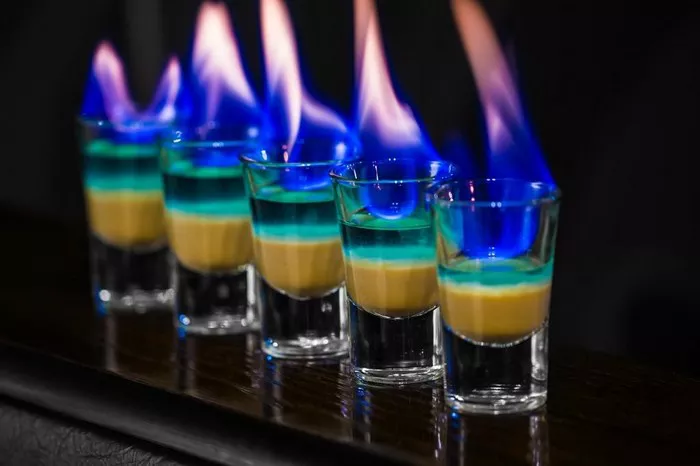The question of “What is the difference between a French 75 and a French Martini?” often arises in discussions surrounding classic cocktails. While both beverages hold a place of prominence in the world of mixology, they diverge significantly in terms of ingredients, flavor profiles, and cultural associations.
Origins and Heritage
The origins of the French 75 and the French Martini trace back to different times and places, underscoring their distinct cultural backgrounds. The French 75, a venerable cocktail with a rich history, first emerged during World War I in France. Named after a powerful French artillery piece, this cocktail combines gin, champagne, lemon juice, and sugar, resulting in a refreshing and effervescent concoction. In contrast, the French Martini has more recent origins, having been invented in the 1980s in New York City. Despite its name, the French Martini does not originate from France; rather, it was crafted by a bartender at one of Manhattan’s trendy bars using vodka, raspberry liqueur, and pineapple juice.
Ingredients and Preparation
One of the most apparent distinctions between the French 75 and the French Martini lies in their respective ingredients and methods of preparation. The French 75 typically calls for gin, champagne, lemon juice, and sugar or simple syrup. The cocktail is traditionally served in a champagne flute, with the gin, lemon juice, and sugar shaken together and strained into the glass before being topped off with champagne. In contrast, the French Martini features vodka as its base spirit, along with raspberry liqueur (such as Chambord) and pineapple juice. The ingredients are shaken with ice and then strained into a martini glass, resulting in a vibrant and fruity libation.
See Also: good tequila for margaritas
Flavor Profiles
Beyond their differing compositions, the French 75 and the French Martini offer distinct flavor profiles that cater to different palates and preferences. The French 75 boasts a crisp and citrusy taste, thanks to the combination of gin, lemon juice, and champagne, with the sugar providing a touch of sweetness to balance the acidity. The effervescence of the champagne lends a light and refreshing quality to the cocktail, making it a popular choice for celebratory occasions or as a pre-dinner aperitif. In contrast, the French Martini exhibits a sweeter and fruitier flavor profile, characterized by the interplay of vodka, raspberry liqueur, and pineapple juice. The raspberry liqueur contributes a luscious berry flavor, while the pineapple juice adds a tropical twist, resulting in a cocktail that is smooth, indulgent, and decidedly modern.
Presentation and Aesthetic Appeal
In addition to their distinct flavor profiles, the French 75 and the French Martini differ in terms of their presentation and aesthetic appeal. The French 75, served in a tall and slender champagne flute, exudes elegance and sophistication, with its effervescent effusion and garnish of lemon twist or cherry adding visual flair. The cocktail’s golden hue, derived from the champagne, further enhances its allure, making it a visually striking option for discerning imbibers. On the other hand, the French Martini, presented in a classic martini glass, showcases a more contemporary and playful aesthetic, with its vibrant pink hue and garnish of fresh raspberries or lemon zest lending a whimsical touch. The cocktail’s sleek and stylish appearance makes it a favorite among those seeking Instagram-worthy libations or Instagrammable moments.
Cultural Significance
Beyond their ingredients and presentation, the French 75 and the French Martini hold different cultural significances and associations within the world of cocktails. The French 75, with its storied history dating back to World War I-era France, evokes images of Parisian cafes, champagne soirées, and the glamorous lifestyle of the “Roaring Twenties.” The cocktail’s association with classicism and sophistication has cemented its status as a timeless libation beloved by cocktail connoisseurs and history buffs alike. In contrast, the French Martini, a product of 1980s cocktail culture and the burgeoning craft cocktail movement, embodies a more contemporary sensibility, with its fusion of flavors and emphasis on experimentation reflecting the eclectic tastes of modern consumers. The cocktail’s popularity in trendy bars and lounges around the world speaks to its enduring appeal among a younger, more adventurous demographic.
Conclusion
In conclusion, while the French 75 and the French Martini share certain similarities as classic cocktails enjoyed by enthusiasts worldwide, they also exhibit distinct differences in terms of ingredients, flavor profiles, presentation, and cultural significance. Whether you prefer the timeless elegance of the French 75 or the playful modernity of the French Martini, there’s no denying that both libations offer a delightful and refreshing escape into the world of mixology. So the next time you find yourself pondering the question of “What is the difference between a French 75 and a French Martini?” remember that the answer lies not just in their ingredients, but in their unique stories, flavors, and experiences. Cheers!


